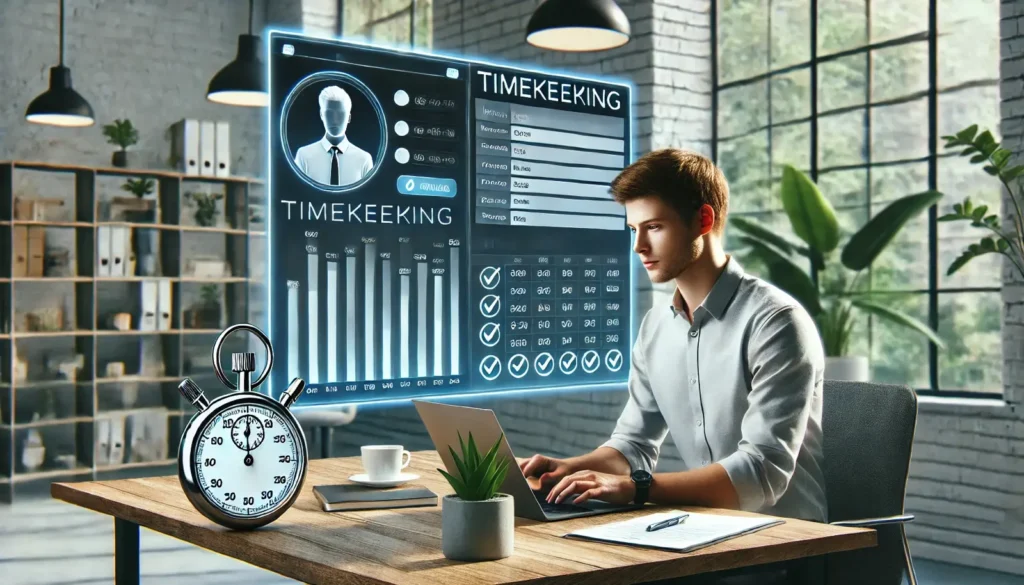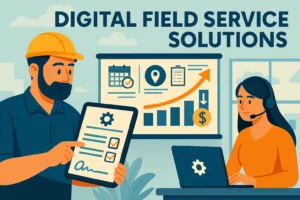Introduction
Time is money, and in business, every minute counts. How your employees spend their working hours directly affects productivity and profits. That's why companies of all sizes—from startups to global enterprises—rely on timekeeping software.
But what exactly is it? Why do businesses need it? And how can it make your workday easier?
This article breaks it all down in simple terms. You'll learn what timekeeping software is, how it works, the core features to look for, and how it can improve your business efficiency.
What Is Timekeeping Software?
In simple words, timekeeping software is a digital tool that records how much time employees spend at work. Think of it as a modern version of the punch clock, but on your phone, tablet, or computer. Instead of manually writing hours on paper or filling out spreadsheets, employees can log their start and end times digitally.
Most solutions also track breaks, overtime, and even paid time off (PTO). Some advanced tools include GPS location tracking, job costing, and payroll integrations, turning them into a central part of workforce management.
Why Do Businesses Need Timekeeping Software?
Every company faces similar challenges:
Employees forget to log their hours.
Managers spend hours fixing timesheet mistakes.
Payroll errors create frustration and sometimes legal issues.
Timekeeping software solves these problems by automating time tracking. It ensures accurate records, reduces compliance risks, and prevents overworking employees.
Key Benefits of Using Timekeeping Software
Accuracy and Transparency
No more guessing when someone clocked in or out. Everything is recorded and stored digitally in real-time.
Saves Time for Managers
Instead of collecting paper sheets or endless Excel files, managers can review timesheets in seconds.
Prevents Overtime Abuse
Built-in alerts notify you when employees work longer than planned or exceed labour law limits.
Improves Payroll Efficiency
Most systems integrate with payroll software, making salary calculations faster and error-free.
Better Workforce Insights
Data from time tracking can show productivity trends, staffing gaps, and areas for improvement.
Core Features to Look for in Timekeeping Software
Not all tools are the same. Here's what you should look for when selecting timekeeping software:
Clock-In and Clock-Out Functionality
The basics: employees need to log in when they start work and log out when they finish. The best systems allow this from any device—desktop, mobile app, or even a tablet kiosk.
Break and Overtime Tracking
Modern tools automatically calculate break times and overtime hours based on your company policies or local labour laws.
Mobile App Support
For remote or mobile teams, having a mobile app is essential. It allows clocking in from anywhere and often includes GPS features.
Geofencing and GPS Tracking
For field employees, geofencing ensures they can only clock in when at the designated work location. GPS tracking helps prevent “buddy punching” (when one employee clocks in for another).
Integration with Payroll and HR Software
Look for tools that connect with payroll, scheduling, and HR systems. This reduces manual data entry and speeds up administrative work.
User-Friendly Interface
A great tool should be easy to learn and use, without long training sessions or complex instructions.
Customisable Policies
Every business has unique work rules, shifts, and overtime policies. Choose a solution that allows customisation to fit your operations.
Top Use Cases for Timekeeping Software
1. Small Businesses
For small teams, a simple app can save hours of admin work and ensure employees are paid correctly.
2. Remote Teams
Timekeeping software makes it easy for remote employees to log hours from any location, ensuring full transparency.
3. Industries with Field Workers
Construction, healthcare, logistics, or security companies often have employees working at multiple sites. GPS-enabled solutions track time and location simultaneously.
4. Project-Based Companies
For agencies or freelancers, tracking time per project helps measure profitability and manage client billing.
5. Large Enterprises
Big teams need advanced features like shift scheduling, multiple location tracking, and detailed reporting.
How to Choose the Best Timekeeping Software
Here's a quick guide for making the right choice:
Define Your Goals – Do you need only basic time tracking or advanced workforce analytics?
Check Integrations – Make sure the software works with your existing payroll or HR tools.
Try Before You Buy – Most providers offer free trials, so you can test usability before committing.
Read Customer Reviews – See how businesses in your industry use it.
Compare Pricing – Look for software that fits your budget while delivering value.
Future Trends in Timekeeping Software
Technology is evolving, and timekeeping software is keeping up:
AI-Powered Scheduling: Predicts staffing needs and optimises shifts automatically.
Voice Command Clocking: Employees clocking in with voice assistants like Alexa or Siri.
Advanced Data Insights: Real-time dashboards for productivity and labour cost forecasting.
Cloud-Based Solutions: Full access from any device, anywhere in the world.
Best Timekeeping Software Examples in 2025
Here are some of the most popular tools available today:
Shifton – Powerful all-in-one timekeeping and scheduling solution.
QuickBooks Time – Great for payroll integrations and reporting.
Jibble – Ideal for small teams and project tracking.
Hubstaff – Excellent for remote teams and productivity monitoring.
Harvest – Good for freelancers and client billing.
Toggl Track – Simple and easy-to-use productivity tracker.
Time Doctor – Focused on productivity and work behaviour analysis.
Conclusion
Managing employee time doesn't have to be complicated. With timekeeping software, businesses can save time, reduce errors, and improve workforce efficiency. Whether you're a small startup or a global company, adopting the right tool makes life easier for everyone—HR teams, managers, and employees alike.
Investing in timekeeping software is not just about tracking hours—it's about building a more productive, fair, and efficient workplace.

 English (US)
English (US)  English (GB)
English (GB)  English (CA)
English (CA)  English (AU)
English (AU)  English (NZ)
English (NZ)  English (ZA)
English (ZA)  Español (ES)
Español (ES)  Español (MX)
Español (MX)  Español (AR)
Español (AR)  Português (BR)
Português (BR)  Português (PT)
Português (PT)  Deutsch (DE)
Deutsch (DE)  Deutsch (AT)
Deutsch (AT)  Français (FR)
Français (FR)  Français (BE)
Français (BE)  Français (CA)
Français (CA)  Italiano
Italiano  日本語
日本語  中文
中文  हिन्दी
हिन्दी  עברית
עברית  العربية
العربية  한국어
한국어  Nederlands
Nederlands  Polski
Polski  Türkçe
Türkçe  Українська
Українська  Русский
Русский  Magyar
Magyar  Română
Română  Čeština
Čeština  Български
Български  Ελληνικά
Ελληνικά  Svenska
Svenska  Dansk
Dansk  Norsk
Norsk  Suomi
Suomi  Bahasa
Bahasa  Tiếng Việt
Tiếng Việt  Tagalog
Tagalog  ไทย
ไทย  Latviešu
Latviešu  Lietuvių
Lietuvių  Eesti
Eesti  Slovenčina
Slovenčina  Slovenščina
Slovenščina  Hrvatski
Hrvatski  Македонски
Македонски  Қазақ
Қазақ  Azərbaycan
Azərbaycan  বাংলা
বাংলা 

